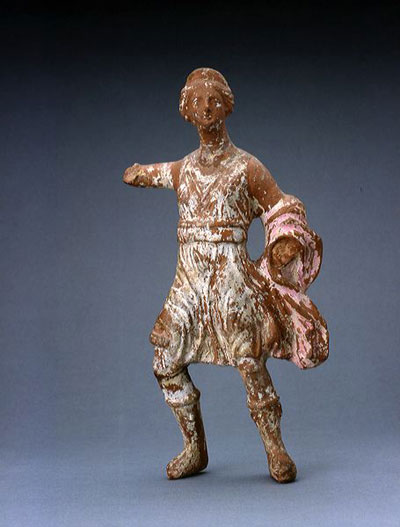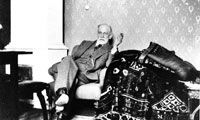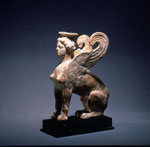
Artemis, Greek, Hellenistic period, from Myrina, 2nd century BC, terracotta © The Freud Museum London |
|
MUSÉE RODIN
79, rue de Varenne
75007 PARIS
INFORMATION:
Tel: 01 44 18 61 10
Site : www.musee-rodin.fr
OPENING HOURS:
Everyday except Mondays
From 9:30am to 4:45pm.
Closed on December 25 and January 1.
ADMISSION FEES:
Full price €6, young visitors €4, professionals €5, families €10.
Combined ticket (museum+exhibition+garden): €9, young visitors and professionals €7, families €10.
Tickets can be purchased from www.musee-rodin.fr
CURATOR:
Bénédicte Garnier
PRESS CONTACT:
Clémence Goldberger
Tel: 01 44 18 61 86
E-mail : goldberger@musee-rodin.fr

|
It was in the middle of the 1890s that Freud in Vienna and Rodin in Paris started their collections. Their passion never slackened from that moment onwards. Numerous archaeological excavations were carried out during that period, and art objects circulated freely, making it easy to acquire works and constantly enrich collections. The obsessive presence of statuettes in the consulting room of the psychoanalyst echoed the multitude of antiquities that gradually invaded the villa of the sculptor in Meudon. When Rodin died in 1917, he left over 6000 antiquities behind him, while Freud possessed no less than 3000 when he passed away in 1939. The Freud collection, kept at the Freud Museum of London, is presented for the first time in France.
A collection rich with meaning
The exhibition displays a selection of antiquities of various origins - Egypt, Greece and Rome - and highlights the works of major importance. Thanks to an exceptional loan from the Chiaramonti Museum of the Vatican, La Gradiva, a source of inspiration for Freud and a whole generation of authors and artists after him, is included among the works presented. The two collections have many similarities, but the main focus is the relationship Rodin and Freud maintained with antiquity. These objects were far from being mere pieces of stone for these two personalities. “Saxa loquuntur”, Freud was fond of saying, for in fact these stones speak a language that needs to be deciphered and translated. Vestiges and fragments are traces of a past that is invariably present, and completely open to exploration. “It is real flesh”, Rodin used to say, revealing the first stirrings of an adoration for his “gods”, his “treasures”. A large number of documents from that period, including letters and photographs, will illustrate this profoundly original relationship with antiquity.
Illustration : Sigmund Freud sitting in his studio, 19 Bergasse in Vienna © The Freud Museum London, around 1930.
Passion at work: the studios
The collection became central to the work in progress of both men. At this point, antiquity merged into creation, giving birth to hybrid and mysterious works. The assemblages of Rodin provide an excellent example of this process. As for Freud, he too worked on assemblages, on “associations”, and he was able to discern a form of psychoanalysis in archaeology: “Similar to archaeology in that it probes the earth, psychoanalysis must unearth, stratum after stratum, the psyche of the patient, in order to dig up treasures buried in the innermost depths”. In the exhibition, La Gradiva testifies to the elaboration of the psychoanalytic research undertaken by Freud.
From Rilke to Marie Bonaparte
Rilke, Lou Andréas-Salomé, Stefan Zweig, Marie Bonaparte, Romain Rolland : all these famous personalities now form a chain of links between Rodin and Freud. Although the two collectors never actually met each other, they frequented the same circles, between Paris and Vienna, among the intelligentsia of the 1900s. Among other links, Rainer Maria Rilke is mentioned because of his role in disseminating the work of Rodin in Vienna, as well as Marie Bonaparte, who introduced the research conducted by Freud to Paris. The exhibition examines these leading figures, who contributed to making the work of Rodin and Freud known, from a completely new angle. The circuit concludes with a presentation of the library of both men.
Illustration : Sphinx, Greek, South Italian, late 5th–early 4th century BC, terracotta © The Freud Museum London
|




